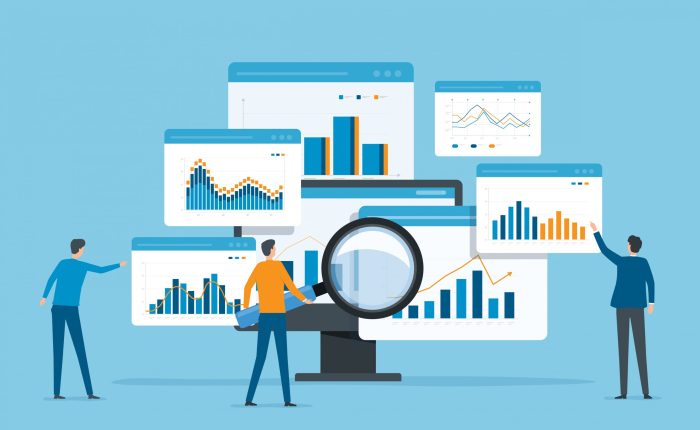Using Analytics for Optimization takes center stage, inviting readers into a world where data-driven decisions reign supreme. From enhancing processes to making informed choices, analytics plays a crucial role in achieving optimal outcomes across various industries.
In this guide, we delve into the different types of analytics, the steps for implementing analytics tools, the benefits of leveraging analytics, and the challenges faced along the way. Get ready to explore the power of data in driving optimization strategies to new heights.
Introduction to Analytics for Optimization
Analytics in optimization refers to the use of data analysis and statistical modeling to improve processes, systems, and decision-making. By leveraging analytics, organizations can gain valuable insights into their operations, identify areas for improvement, and make informed strategic decisions.
How Analytics Enhances Decision-making
Analytics plays a crucial role in enhancing decision-making processes by providing organizations with actionable data-driven insights. Through the analysis of historical and real-time data, businesses can identify trends, patterns, and correlations that help them make informed decisions. For example, by analyzing customer data, companies can better understand consumer behavior and preferences, leading to more targeted marketing strategies and product offerings.
Examples of Industries Using Analytics for Optimization
- 1. E-commerce: Online retailers use analytics to optimize their websites, personalize customer experiences, and improve conversion rates.
- 2. Healthcare: Healthcare providers utilize analytics to enhance patient care, optimize resource allocation, and improve operational efficiency.
- 3. Finance: Financial institutions leverage analytics to detect fraud, manage risks, and make data-driven investment decisions.
- 4. Manufacturing: Manufacturers use analytics to optimize production processes, forecast demand, and minimize downtime.
Types of Analytics for Optimization

In the world of analytics, different types play a crucial role in optimizing processes. Let’s dive into the various types and how they contribute to enhancing efficiency.
Descriptive Analytics
Descriptive analytics involves analyzing historical data to understand what has happened in the past. It helps in summarizing and interpreting data to gain insights into trends and patterns. For example, a retail company may use descriptive analytics to track sales performance over a specific period.
Diagnostic Analytics
Diagnostic analytics focuses on identifying why certain events occurred. It delves deeper into the data to uncover the root causes of specific outcomes. A healthcare provider could use diagnostic analytics to determine factors leading to patient readmissions.
Predictive Analytics
Predictive analytics uses historical data and statistical algorithms to make predictions about future outcomes. It helps in forecasting trends and behaviors, enabling organizations to make proactive decisions. An e-commerce platform might use predictive analytics to anticipate customer preferences and personalize recommendations.
Prescriptive Analytics
Prescriptive analytics goes beyond predicting future outcomes by suggesting possible actions to achieve desired results. It provides recommendations on the best course of action to optimize processes. For instance, a logistics company could use prescriptive analytics to optimize delivery routes and minimize costs.
Implementing Analytics Tools for Optimization: Using Analytics For Optimization
Implementing analytics tools for optimization is crucial for businesses looking to improve their performance and make data-driven decisions. Selecting the right analytics tools, ensuring data quality, and integrating these tools into existing systems are key steps in this process.
Steps for Selecting the Right Analytics Tools for Optimization
- Identify your business goals and objectives to determine the specific analytics tools needed.
- Research and compare different analytics tools in the market to find the ones that best align with your requirements.
- Consider factors such as ease of use, scalability, integration capabilities, and cost when selecting analytics tools.
- Seek feedback from other users and read reviews to gauge the effectiveness of the analytics tools.
Importance of Data Quality in Implementing Analytics Tools
Data quality is essential for the success of analytics tools implementation. Poor data quality can lead to inaccurate insights and decisions. It is crucial to ensure that the data used by analytics tools is clean, accurate, and up-to-date to derive meaningful results.
Best Practices for Integrating Analytics Tools into Existing Systems for Optimization
- Ensure seamless integration of analytics tools with existing systems to avoid disruptions in operations.
- Train employees on how to use the analytics tools effectively to maximize their potential.
- Regularly monitor and evaluate the performance of analytics tools to make necessary adjustments for optimization.
- Collaborate with IT professionals to address any technical challenges that may arise during the integration process.
Benefits of Using Analytics for Optimization

Utilizing analytics for optimization offers a wide range of benefits that can significantly enhance decision-making and efficiency in various industries. By leveraging data-driven insights, organizations can make informed decisions that lead to improved performance and competitive advantage.
Improved Decision-Making
Analytics provide organizations with valuable insights into customer behavior, market trends, and operational performance. By analyzing this data, businesses can make more informed decisions that are based on evidence rather than intuition. This leads to better outcomes and a competitive edge in the market.
Cost Savings
One of the key benefits of using analytics for optimization is the potential for cost savings. By identifying inefficiencies in processes and operations, organizations can streamline their workflows and reduce unnecessary expenses. This can lead to significant savings over time and improve overall profitability.
Enhanced Customer Experience
Analytics can help organizations better understand their customers’ needs and preferences. By analyzing customer data, businesses can personalize their offerings, improve customer service, and create targeted marketing campaigns. This leads to a more satisfying customer experience and increased loyalty.
Real-Time Insights
Analytics tools provide organizations with real-time insights into their operations, allowing them to make quick adjustments and respond to changing market conditions. This agility is crucial in today’s fast-paced business environment and can help organizations stay ahead of the competition.
Optimized Marketing Strategies
By analyzing data on customer behavior and engagement, organizations can optimize their marketing strategies for better results. Analytics can help identify the most effective channels, messages, and timing for reaching target audiences, leading to improved campaign performance and ROI.
Challenges in Leveraging Analytics for Optimization
Implementing analytics for optimization can come with its fair share of challenges that organizations need to address in order to maximize the benefits. From data quality issues to resistance from employees, there are several obstacles that need to be overcome for successful adoption of analytics for optimization purposes.
Data Quality Concerns
One of the major challenges organizations face when leveraging analytics for optimization is ensuring the quality of the data being used. Poor data quality can lead to inaccurate insights and decisions, ultimately hindering the optimization process. To overcome this challenge, organizations need to invest in data cleansing processes, establish data governance policies, and regularly monitor and validate data sources.
Lack of Skilled Personnel
Another common challenge is the lack of skilled personnel who can effectively leverage analytics tools for optimization. To address this issue, organizations can provide training and upskilling opportunities for existing employees, hire data analytics experts, or collaborate with external consultants to fill the skill gap.
Resistance to Change, Using Analytics for Optimization
Resistance from employees to adopt new analytics tools and processes can also pose a challenge when implementing analytics for optimization. Organizations can overcome this by involving employees in the decision-making process, communicating the benefits of analytics clearly, and providing adequate support and training to help employees adapt to the changes.
Integration of Analytics into Existing Systems
Integrating analytics tools and processes into existing systems and workflows can be a complex task, especially in large organizations with legacy systems. To address this challenge, organizations need to carefully plan the integration process, ensure compatibility between different systems, and work closely with IT teams to streamline the implementation.
Measuring ROI and Performance
Measuring the return on investment (ROI) and performance of analytics initiatives can be challenging, especially when the outcomes are not easily quantifiable. To overcome this, organizations should establish clear KPIs and metrics to track the impact of analytics on key business objectives, regularly evaluate the performance of analytics initiatives, and make adjustments as needed to drive continuous improvement.






